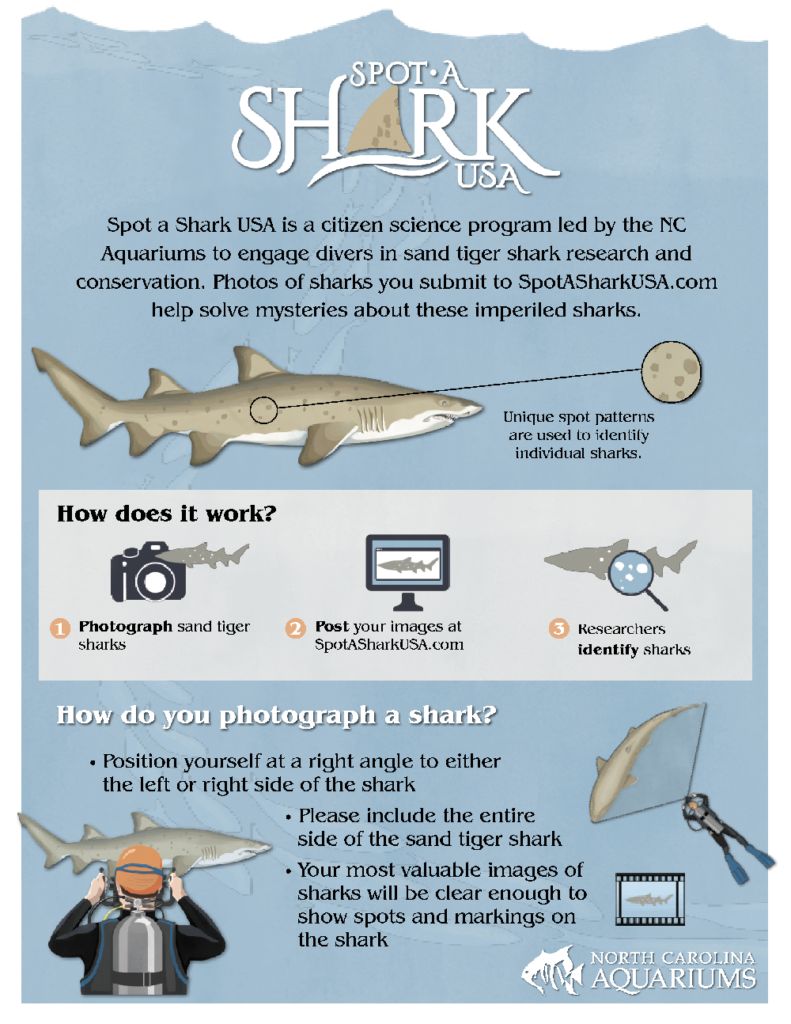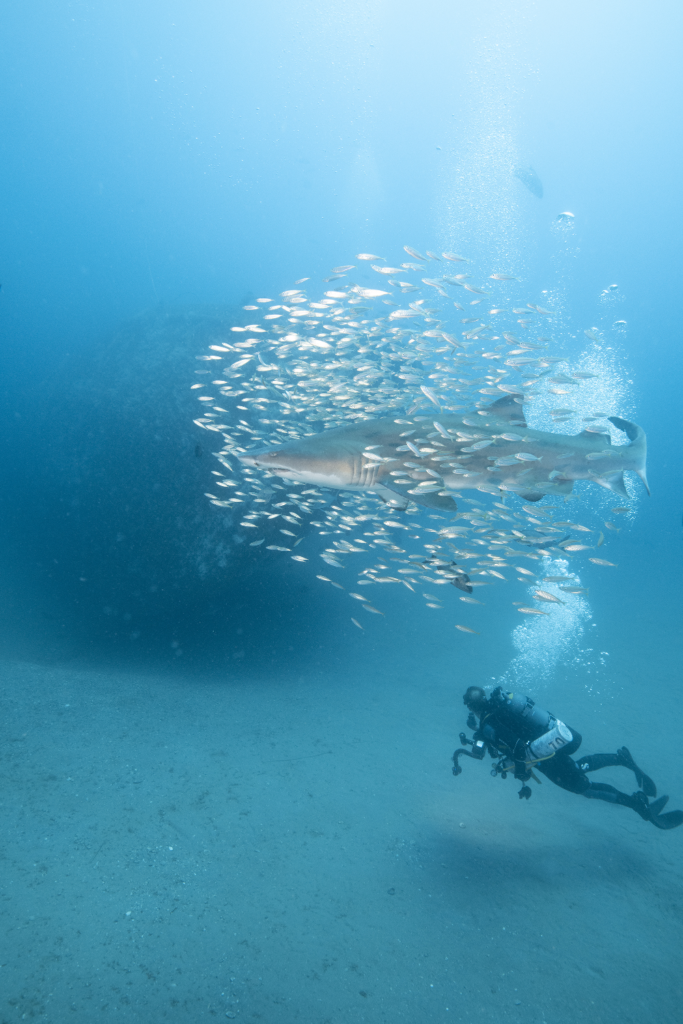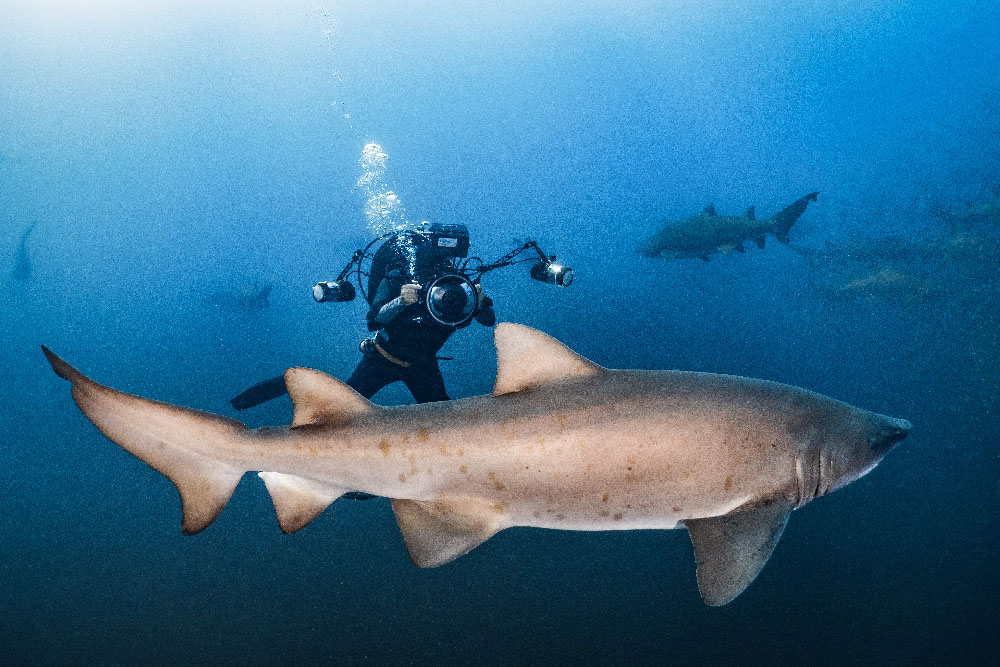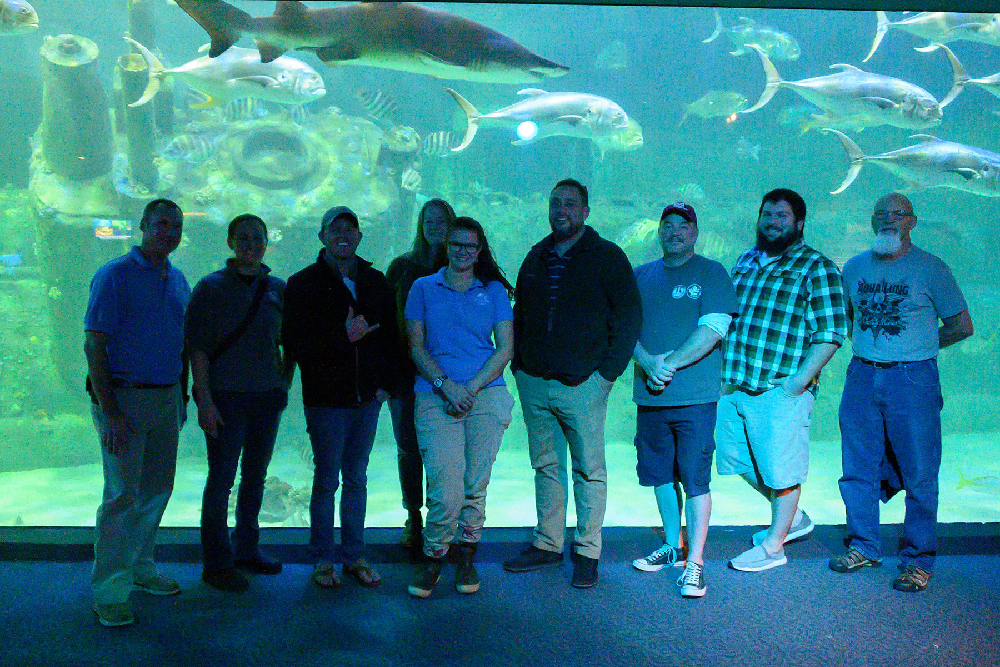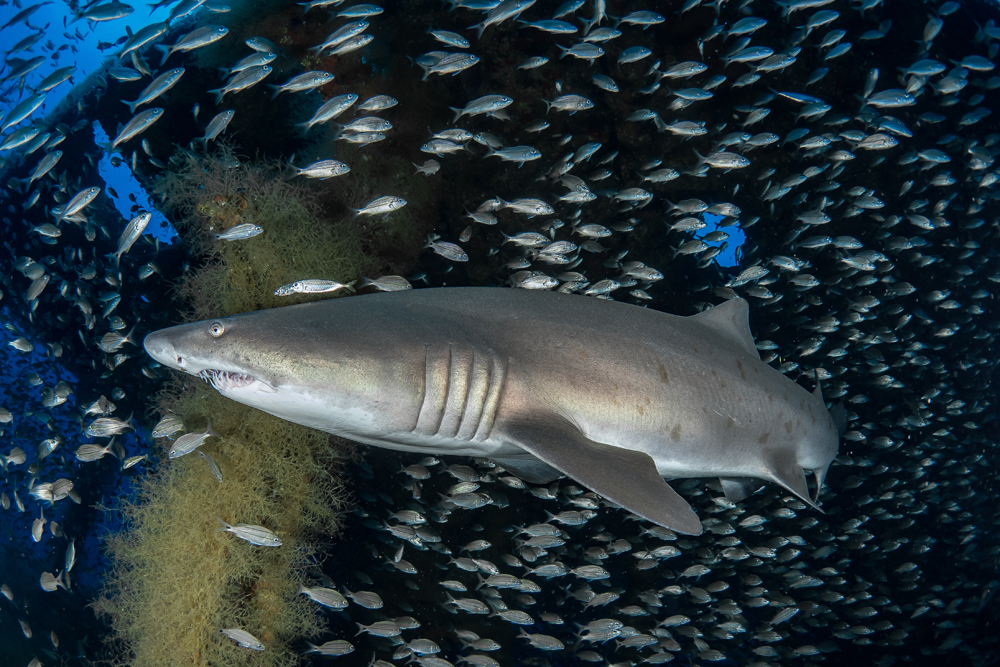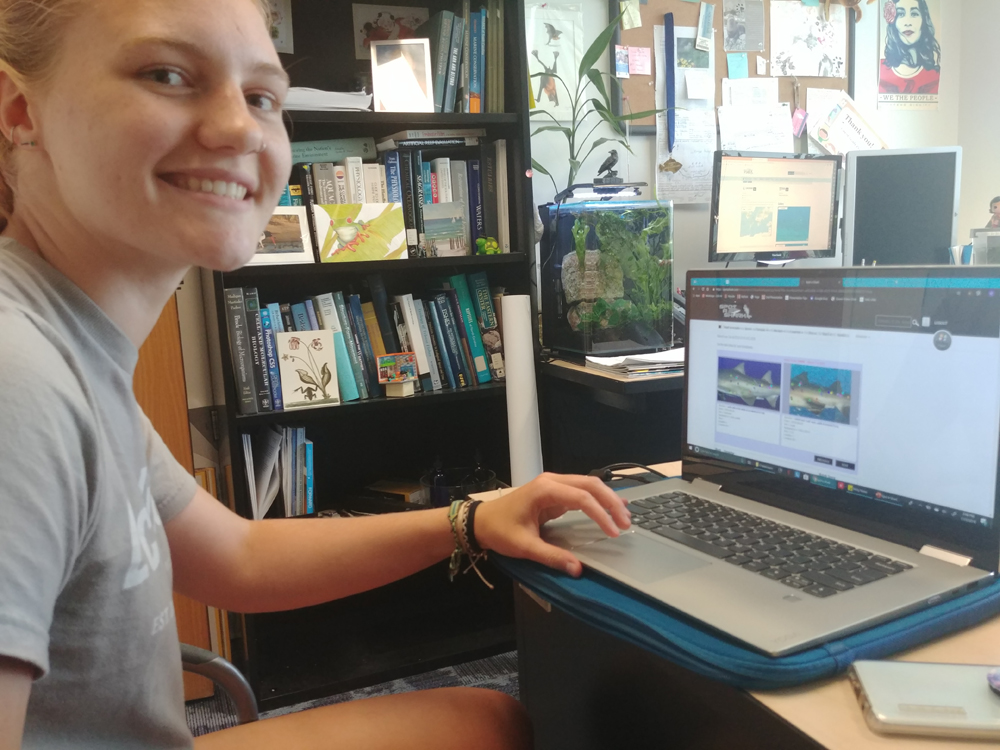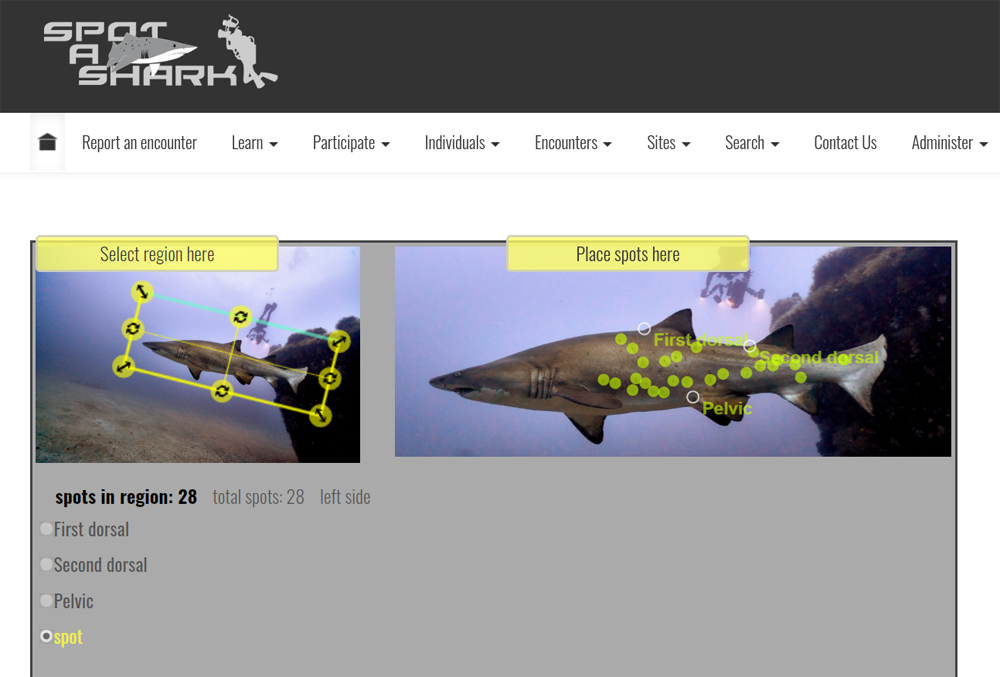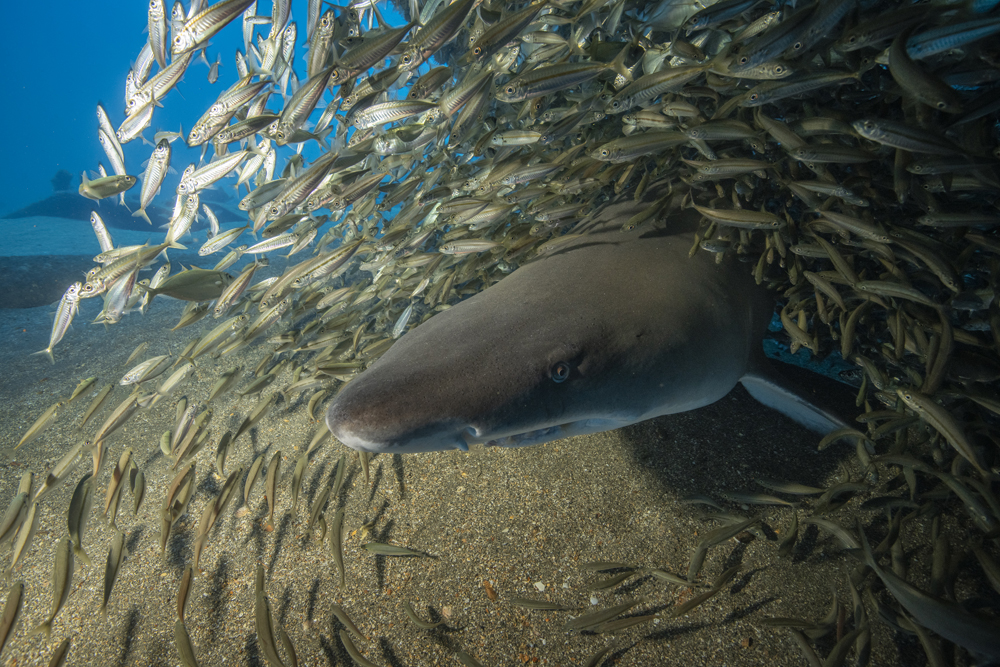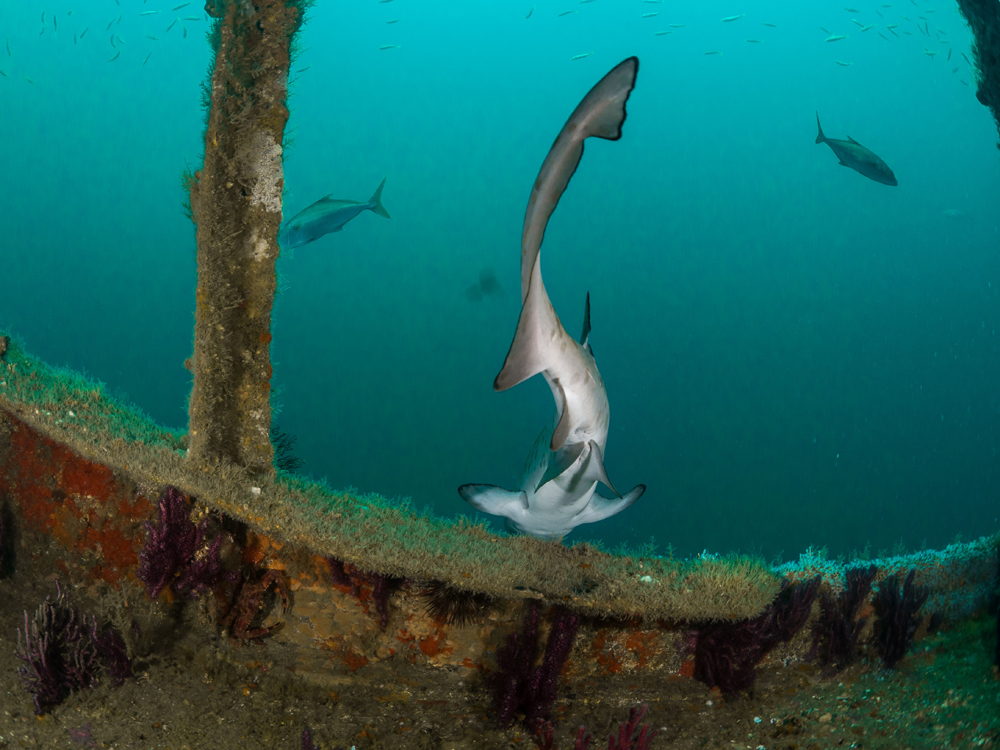Spot a Shark

I am the project manager for Spot A Shark USA – a citizen scientist program that aims to better understand sand tiger shark Carcharias taurus populations along the Atlantic coast. SCUBA divers are asked to photograph the sand tiger sharks they encounter on their adventures and post their images to the Spot A Shark USA website. My team of aquarium scientists and students then uses Wildbook® software to map the unique spot patterns visible along the sides of the photographed sharks to identify individual animals.
Popular in aquariums because of their fierce appearance but relatively docile nature, sand tiger sharks are valuable ambassadors to spread awareness for threats to sharks and rays. Globally, sand tiger shark populations have experienced significant declines. They are listed as vulnerable on the IUCN Red List of Threatened Species, and as a species of concern by the National Marine Fisheries Service. In the US, recreational and commercial fishing are prohibited, and this species is ranked as highly vulnerable to climate change impacts and habitat disruption.
Waters off the North Carolina coast are important for sand tiger sharks year-round. It is known that many of the shipwrecks in the ‘Graveyard of the Atlantic’ are known aggregation spots for sand tiger sharks, but the extent to which the species relies on this habitat is uncertain. Importantly, pregnant sand tiger sharks are found here during summer, fall and winter, suggesting a key role of this habitat in their reproductive ecology. The North Carolina Aquariums have made progress towards understanding sand tiger shark habitat use in the northwestern Atlantic. We have over 850 individual sharks in our photo library, with 35 sharks that have been photographed on more than one date. Repeat records of even more individual sand tiger sharks will help track their movement and behavior over time.


